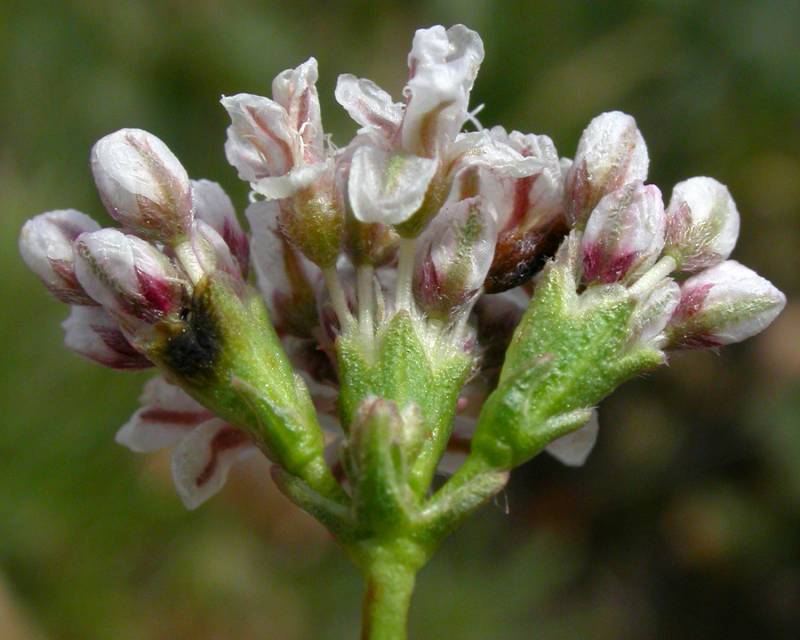|
|
rush buckwheat, tall buckwheat
|
|
Sturdy perennial from a thick taproot with wiry, glabrous and glaucous flowering stems 3-8 dm. tall. |
|
Basal, ovate, 7-15 cm. long, truncate at base, slightly hairy by green on both surfaces, with petioles about as long as the blade. |
|
Inflorescence large, open, loosely cymose, the cup-shaped involucre about 3 mm. long and few-flowered; the tepals 3 mm. long, white to cream but pinkish in the bud, without a stipe at the base, pubescent on the lower half. |
|
|
Eriogonum gordonii |
|
|
Separate from Eriogonum nudum by the leaves and flower clusters. E. nudum has more-or-less oblong leaves that are white-woolly underneath on petioles at least twice as long as the blade; the flowers are usually in tight, globose clusters. |
|
June-August |
|
Sand and gravel slopes and flats, grasslands, sagebrush desert, ponderosa pine forest openings, and montane ridges. |
|
|
Occurring east of the Cascades crest in Washington; Washington to California, east to southern Idaho and Nevada.
|
|
Native |
|
Not of concern |
E. baileyi, E. cernuum, E. codium, E. compositum, E. douglasii, E. elatum, E. flavum, E. heracleoides, E. maculatum, E. marifolium, E. microtheca, E. niveum, E. nudum, E. ovalifolium, E. pyrolifolium, E. sphaerocephalum, E. strictum, E. thymoides, E. umbellatum, E. vimineum |
E. baileyi, E. cernuum, E. codium, E. compositum, E. douglasii, E. flavum, E. heracleoides, E. maculatum, E. marifolium, E. microtheca, E. niveum, E. nudum, E. ovalifolium, E. pyrolifolium, E. sphaerocephalum, E. strictum, E. thymoides, E. umbellatum, E. vimineum |
|
|
| |


